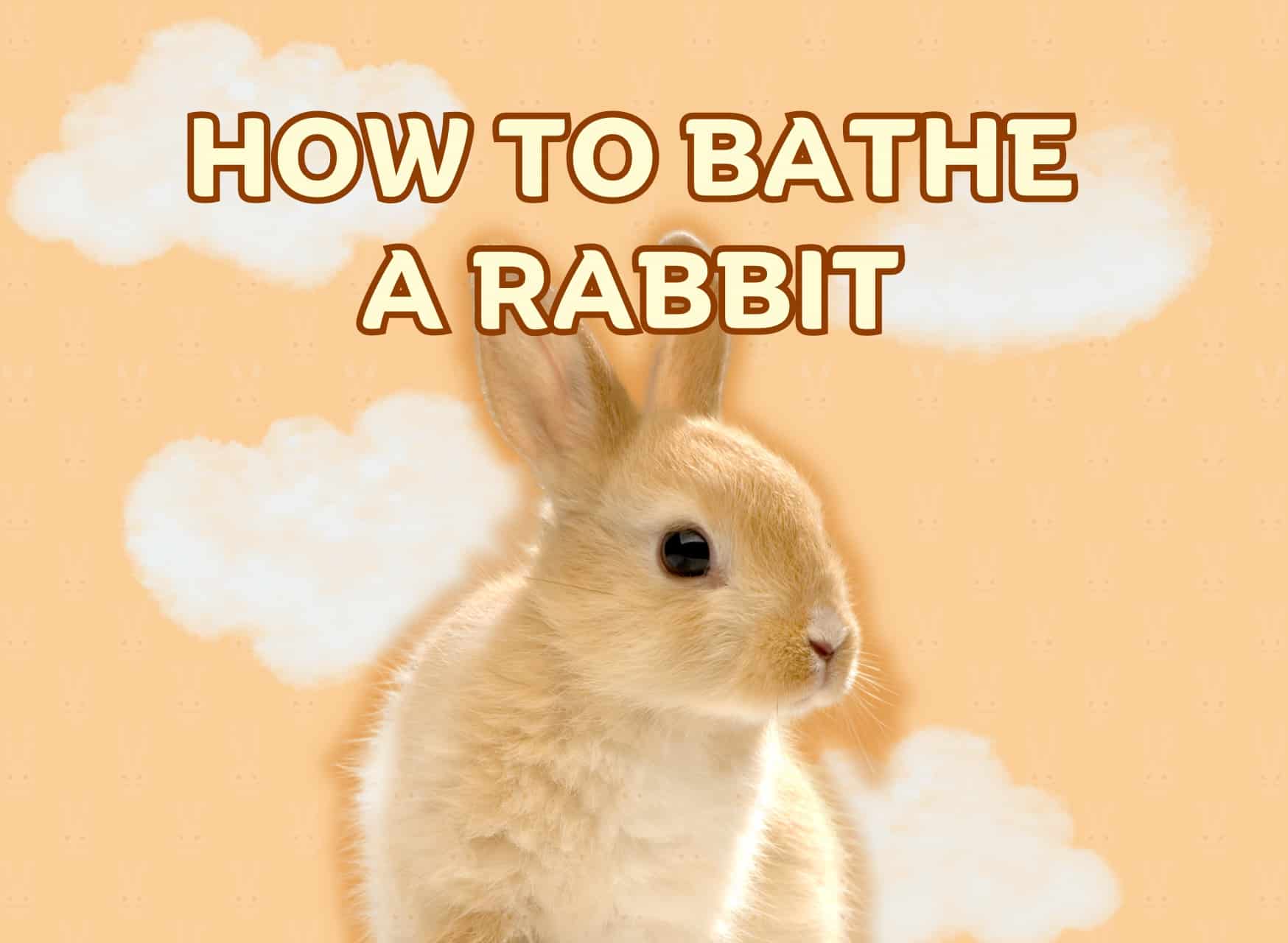DIY Dog Grooming: The Ultimate Guide on How to Trim Your Dog’s Nails Safely and Effectively

Sharing is Caring!
Introduction
Proper dog nail trimming is an essential part of pet care, as it can prevent discomfort and pain for your furry friend. However, the process can be intimidating for many pet owners, especially those who are new to dog ownership. If you’re wondering how to trim dog nails safely and effectively, you’re not alone. In this article, we’ll provide you with a comprehensive guide on how to cut dog nails, step-by-step. With the right tools and techniques, you can make the process a stress-free and positive experience for both you and your pup.
The Importance of Proper Nail Trimming
Nail trimming in dogs is one of the most important steps in caring for your dog. Not only does it keep your dog healthy, but it also keeps them from hurting themselves. If you have a dog with long nails, you might worry about them scratching you or another person in the house. However, if you don’t regularly clip dog nails, they can start to curl around and dig into their paw pads, which can cause pain and infection.
If you’re not sure how to clip dog nails, we’ve put together this guide to help make the process easier for both you and your pup!
Basic Issues You Need to Know Before Going to The Stage of Cutting Dog Nails
Before you start clipping your dog’s nails, there are some basic issues you need to be aware of to ensure a safe and successful nail-trimming experience for both you and your pet. From understanding the anatomy of a dog’s nail to choosing the right tools, taking the time to educate yourself on these important issues can make all the difference. In this section, we’ll cover some of the basic issues you need to know before going to the stage of cutting dog nails. By having a solid foundation of knowledge, you can approach the process with confidence and ease.
How Often Should You Cut Your Dog’s Nails?
Knowing how often to trim your dog’s nails is a key part of learning how to trim dog nails properly. It can be challenging to determine the right schedule for cutting dog nails, as it has many different factors such as breed, age, and activity level, we give some common cases to help you know how often it is time to trim dog nails.
The nails should be trimmed to the point where they just about touch the ground when the dog stands
Signs that your dog’s nails are too long, such as curling under their paw, clicking on hard surfaces, and difficulty walking.
As a general rule, most dogs need their nails trimmed every 4-6 weeks. However, some dogs may need more frequent trimming, while others may need less
Puppies’ nails grow quickly, so they may need their nails trimmed every 2-3 weeks
Senior dogs are often less active, which means their nails may not grow as quickly and may need less frequent trimming
When Are a Dog’s Nails Too Long?
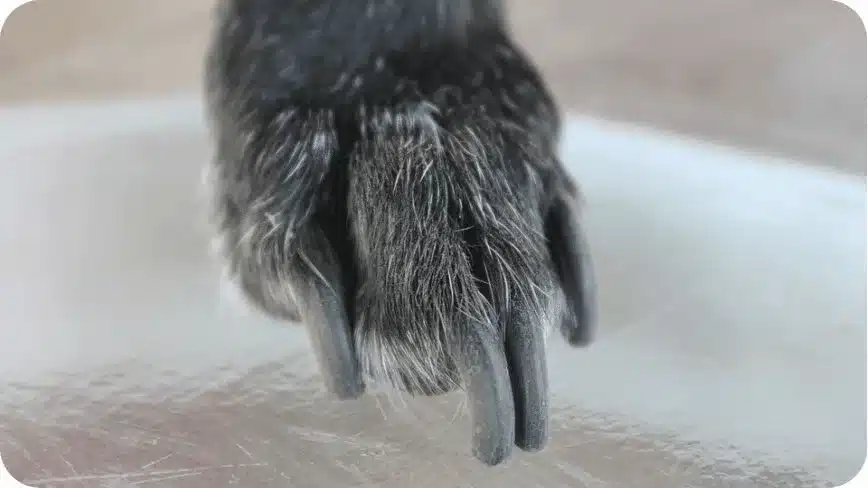
Knowing when your dog’s nails are too long, you need to watch for the following signs:
Curling under: If your dogs nails appear to be curling under their paw, it’s a sign that they are too long.
Clicking sound: If you hear a clicking sound when your dog walks on a hard surface, it’s an indication that their nails are too long.
Touching the ground: If your dog’s nails are touching the ground when they stand, it’s a sign that they are too long
Difficulty walking: If your dog is having trouble walking or seems to be in pain when walking, it could be a sign that their nails are too long.
Nail breakage: If your dog’s nails are breaking frequently, it could be a sign that they are too long and need to be trimmed.
What Happens if My Dog’s Nails Get Too Long?
If your dog’s nails get too long, it can lead to discomfort and pain for your pet. Here are some potential problems that can occur if your dog’s nails are left too long:
Difficult for your dog to walk: Long nails can make it difficult for your dog to walk, especially on hard surfaces. This can cause pain and discomfort for your pet and may also increase their risk of slipping and falling.
Nail breakage: Long nails are more likely to break, which can be painful for your dog and cause bleeding.
Ingrown nails: If the nails of your dog are left too long, they may begin to grow into the paw pads, causing discomfort and pain.
Arthritis: Long nails can also contribute to joint pain and stiffness, which can worsen the symptoms of arthritis in dogs.
Splaying of the toes: When a dog’s nails are too long, the toes can splay out, causing instability and pain in the feet.
Infections: Long nails can collect dirt and debris, leading to infections or other foot problems.
Simple Steps & Tips to Trim Your Dog Nails Like a Pro
Cutting your dog’s nails can be a daunting task, but with the right tools and techniques, you can do it like a pro. Proper nail trimming is important for your dog’s health and comfort, but it’s also essential to avoid hurting your pet or damaging the nails.
Step 1: Preparing The Tools
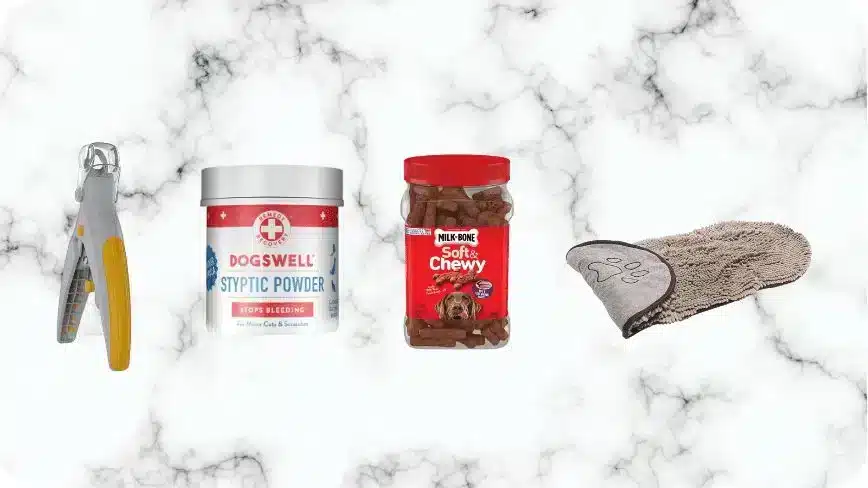
Here are some things you’ll need to prepare to cut your dog’s nails:
Nail clippers: There are various types of nail clippers available for dogs, such as guillotine-style and scissor-style clippers. Dog nail clippers are also a must-have in your dog supplies that you should invest in to make your nail clipping process a breeze.
Styptic powder: This powder can be used to stop any bleeding if you accidentally cut the quick, which is the blood vessel in your dog’s nail.
Treats: Using treats can help make the process more positive for your dog and reinforce good behavior.
Towels: Towels can be useful for keeping your dog in place and protecting your clothing.
Muzzle (optional): If your dog is particularly anxious or prone to biting, a muzzle may be necessary for safety.
Patience: Clipping your dog’s nails can be a time-consuming process, so it’s important to have patience and take breaks if needed.
Step 2: Get your dog comfortable

Desensitization: Get your dog used to the sound of the nail clippers or grinder by letting them hear it and rewarding them with treats. Gradually move the tool closer to your dog’s paws and reward them for staying calm.
Positive reinforcement: Use treats and praise to reinforce good behavior during the nail trimming in dogs process. Reward your dog for staying still and calm, and take breaks if they seem anxious or agitated.
Massage and petting: Offer your dog affection and physical touch to help them feel relaxed and comfortable. This can also help to distract them from the nail trims process.
Familiar environment: Trim your dog’s nails in a familiar and comfortable environment, such as their own home. This can help your dog feel more at ease and less anxious
Step 3: Locate the quick
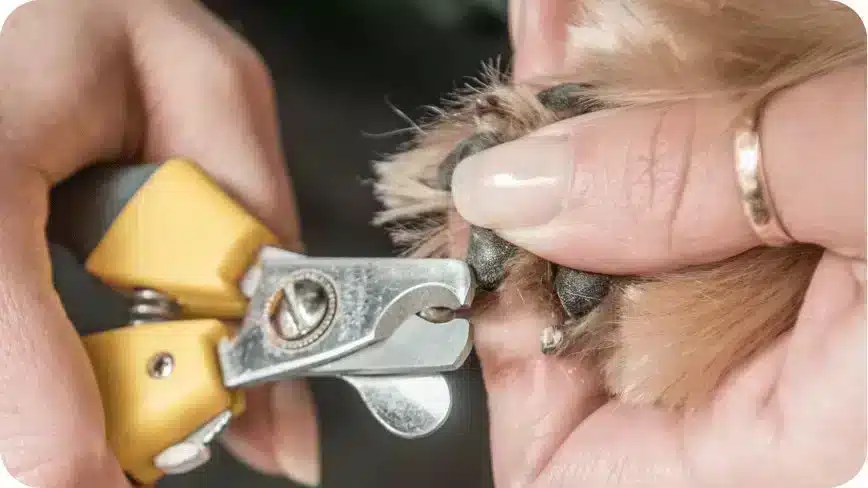
Examine the nail: Hold your dog’s paw and examine the nail. Look for the pink area near the base of the nail.
Shine a light: If your dog has dark nails, it can be more difficult to see the quick. Shine a light on the underside of the nail to help you locate it.
Look for a white tip: As you trim, look for a white, chalky tip at the end of the nail
Step 4: Trim dog nails
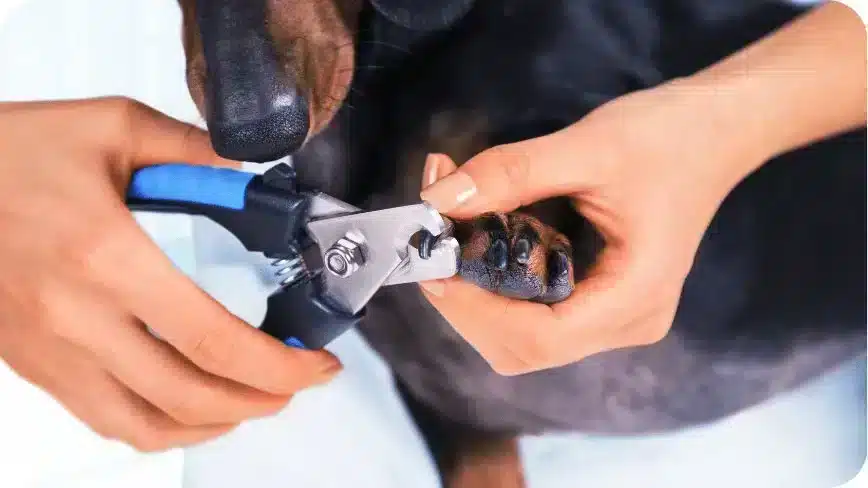
Take it slow: When cutting dog nails, take it slow and only remove a small amount of the nail at a time.
Hold your dog’s paw gently but firmly, and use the clipper to take off a small amount of the nail at a time. Make sure to cut at a 45-degree angle and avoid the quick.
Repeat on all nails: Continue trimming all of your dog’s nails, making sure to take it slow and not rush the process.
Reward your dog: Once you’re finished, reward your dog with a treat or praise to reinforce positive behavior
Step 5: Use styptic powder
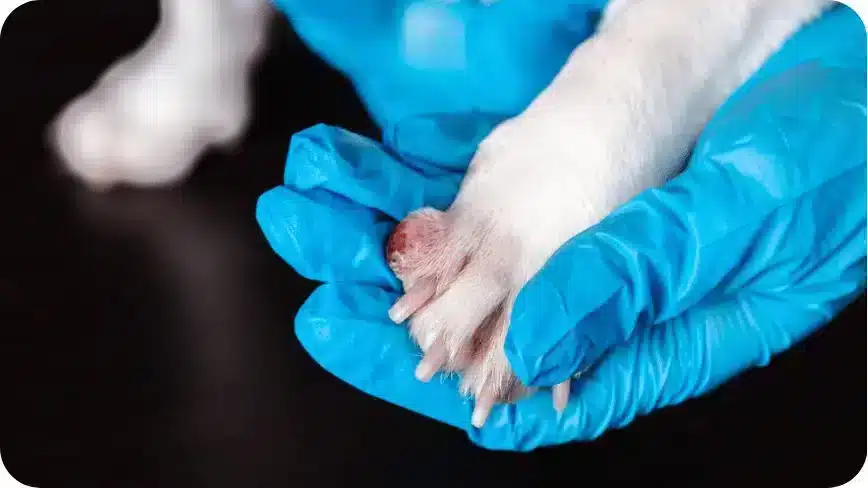
If you accidentally cut the quick, it can be painful for your dog and may cause bleeding. Using styptic powder is the way to stop the bleeding and soothe the area.
Clean the area: Gently clean the affected area with a clean cloth or cotton ball. You can use a small amount of water or hydrogen peroxide to disinfect the area if needed.
Apply styptic powder: Dip the affected nail into the styptic powder or apply a small amount directly to the nail using a cotton ball or swab. Apply pressure to the nail to help the powder stick.
Wait: Wait for the powder to take effect and stop the bleeding. This may take a few minutes.
Monitor the area: Keep an eye on the affected area and monitor for any signs of infection or further bleeding. If the bleeding continues or your dog shows signs of pain or discomfort, seek veterinary care.
Conclusion
Trimming your dog’s nails is an important part of pet care and can be easily done at home with the right tools and techniques. By preparing the necessary tools, getting your dog comfortable with the process, and following the proper steps, you can cut your dog’s nails like a pro and ensure their health and comfort.
Remember to take it slow, locate the quick, and use styptic powder if necessary. By taking the time to clip your dog’s nails regularly, you can prevent discomfort, pain, and potential health problems. So, why not try DIY dog grooming for yourself? With a little practice and patience, you’ll be able to confidently trim your dog’s nails at home and save money on professional grooming services.
Sharing is Caring!
About The Author
PawCool Team
Related Categories: Dogs | Dog Health & Care
Latest Articles

Never Miss A Thing!
All pet stories & guides you care about




